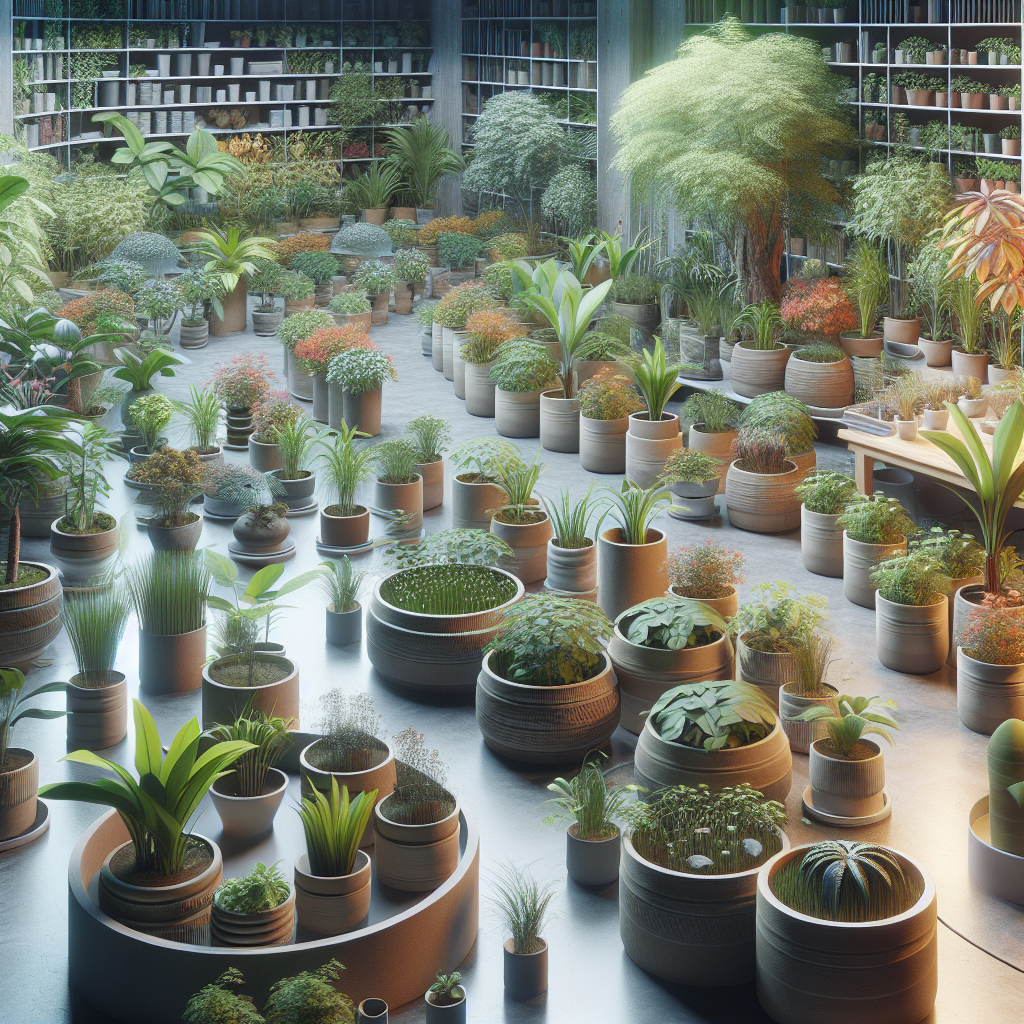Have you ever dreamt of creating your own lush, exotic oasis right in your own home or garden? With the rising trend of cultivating exotic plants in containers, the possibilities are truly endless. From vibrant tropical flowers to unique succulents and rare orchids, the world of exotic plants has something for every plant enthusiast.
Cultivating exotic plants in containers offers a whole new world of possibilities for those looking to add a touch of sophistication and greenery to their living spaces. Whether you have a small balcony, a sunny window sill, or a sprawling garden, container gardening allows you to experiment with different plants and designs without the constraints of traditional gardening. With the right knowledge and care, anyone can create their own little piece of paradise filled with exotic beauty. So, let’s dive into the exciting world of cultivating exotic plants in containers!
**Choosing the Right Container**
When it comes to cultivating exotic plants in containers, choosing the right container is key. The type of container you select can greatly impact the growth and health of your plants. Opt for containers that have good drainage to prevent root rot and ensure proper air circulation. You can choose from a variety of materials such as ceramic pots, terracotta pots, plastic pots, or even hanging baskets depending on your plant’s specific needs.
Consider the size of the container as well – some plants require more space for their roots to grow while others thrive in smaller pots. Make sure to match the size of the container with the size of your plant to provide ample room for growth. Additionally, consider the aesthetic appeal of the container – choose one that complements the beauty of your exotic plant while also fitting into your overall design scheme.
**Selecting the Right Soil**
The type of soil you use plays a crucial role in the success of cultivating exotic plants in containers. Most exotic plants prefer well-draining soil that is rich in nutrients. Opt for high-quality potting mix specifically formulated for container gardening as it provides good drainage while retaining moisture essential for plant growth.
Avoid using garden soil as it may contain pests, diseases, or weed seeds that can harm your exotic plants. You can also consider adding organic matter such as compost or perlite to improve soil structure and fertility. Remember to repot your plants every 1-2 years to refresh the soil and provide nutrients essential for healthy growth.
**Watering and Fertilizing Tips**
Proper watering and fertilizing are essential for cultivating healthy exotic plants in containers. Different types of exotic plants have varying water requirements – some prefer moist soil while others do better with drier conditions. Water your plants thoroughly whenever the top inch of soil feels dry but avoid overwatering which can lead to root rot.
Fertilize your exotic plants regularly during their active growing season using a balanced fertilizer diluted to half strength. Avoid fertilizing during their dormant period as it may harm rather than help your plant’s growth. Consider using organic fertilizers such as compost tea or fish emulsion for a more natural approach to feeding your exotic beauties.
**Sunlight Requirements**
Exotic plants come from diverse climates around the world so it’s important to understand their specific sunlight requirements when cultivating them in containers. Some tropical plants thrive in bright indirect light while others prefer full sun exposure throughout the day.
Place your containers in locations that receive adequate sunlight based on your plant’s needs – too much sun can scorch delicate leaves while too little sun can cause leggy growth or lackluster blooms. Consider moving your containers around based on seasonal changes in sunlight intensity to ensure optimal growing conditions for your exotic beauties.
**Pest Management**
Just like any other plant, exotic plants cultivated in containers are susceptible to pests such as aphids, spider mites, whiteflies, and mealybugs among others. Monitor your plants regularly for signs of pest infestation such as yellowing leaves, sticky residue on leaves or stems, or visible insects crawling on foliage.
Use natural pest control methods such as neem oil spray, insecticidal soap spray, or introducing beneficial insects like ladybugs to keep pests at bay without harming your precious exotics or polluting the environment with harsh chemicals.
**FAQs**
Q: Can I grow tropical fruits like bananas or pineapples in containers?
A: Yes! Many tropical fruits can be grown successfully in containers given proper care and growing conditions.
Q: How often should I repot my exotic plant?
A: Repotting frequency varies depending on the size and growth rate of each plant but generally every 1-2 years is recommended.
Q: Can I keep my potted orchids outdoors year-round?
A: It depends on where you live – orchids thrive best indoors where temperatures remain consistent throughout all seasons but some varieties can be grown outdoors if climate conditions permit.
In conclusion, cultivating exotic plants in containers opens up a whole new world of possibilities for green thumbs looking to add an element of intrigue and beauty into their living spaces. By choosing suitable containers, selecting appropriate soil mixes, providing adequate sunlight and water requirements along with regular care maintenance practices like pruning occasionally — anyone can cultivate thriving indoor gardens regardless if they reside within apartments lacking outdoor space due its versatility which will astonish beginners & experienced gardeners alike by promising endless joy amongst these wondrous creations!













